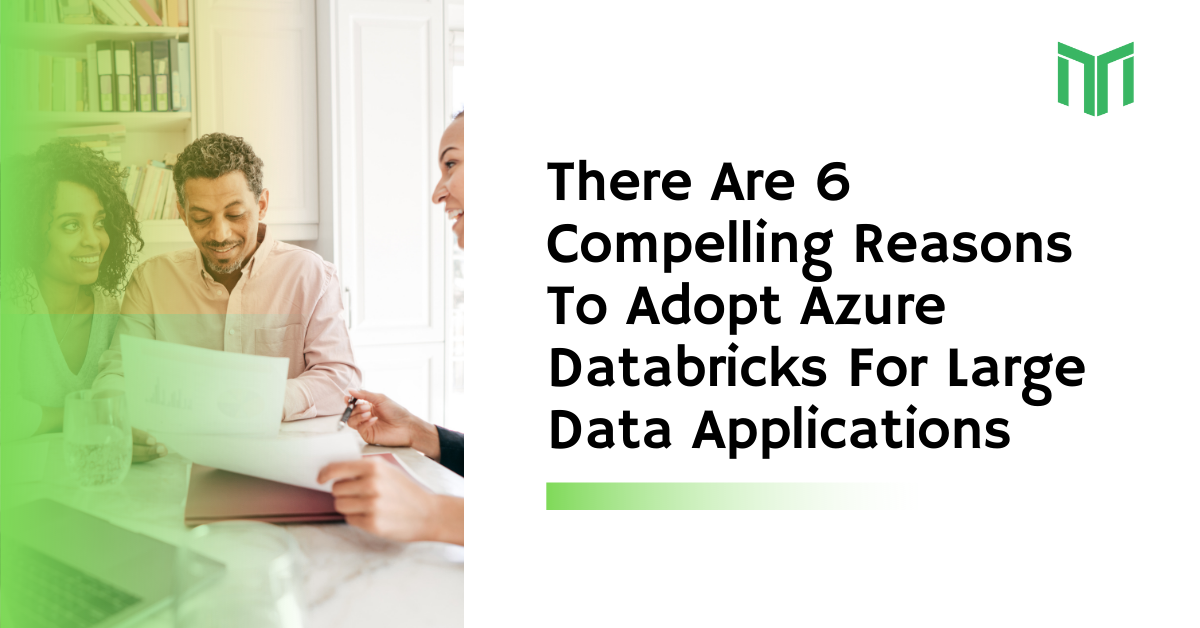Big data is more widespread than ever before in our line-of-business computer systems in a world of fast digital change.
By 2020, the global volume of big data will have grown from 4.4 zettabytes to about 44 zettabytes, or 44 trillion gigabytes, and you’ll almost certainly need the correct data tools to locate the gold beneath it.
However, what we refer to as big data accounts for just 10% of the total data available to businesses; the remaining 90% is unstructured, vast, and difficult to extract economic value from.
This is why big data analytics technologies like Apache Spark, which are built to operate across huge clusters of databases and computers to investigate data, are so important.
Azure Databricks is a cloud-optimized version of Apache Spark that fits into the big data equation. It was built by the inventors of Spark and is especially integrated and optimized for Microsoft Azure, making it one of the best analytics platforms presently available for enterprises on the Azure Cloud searching for a big data solution.
What is Azure Databricks, and how does it work?
Azure Databricks is a data analytics solution developed on top of Microsoft Azure that can be used to manage, parse, and analyze huge amounts of data in order to construct and deploy models on that data in order to extract actionable insights, which is essential for attaining innovation.
Databricks is built fully on Apache Spark, making it an excellent tool for individuals who are already familiar with the open-source cluster computing platform. It’s developed primarily for big data processing as a single analytics engine, and data scientists may use the built-in core API for core languages like SQL, Java, Python, R, and Scala.
It also contains the following:
- DataFrames with Spark SQL
- GraphX is a program that works with graphs, graph-parallel processing, and data exploration.
- MLib provides support for machine learning (ML).
- Support for streaming
Azure Databricks uses Microsoft Cloud as a fully managed Platform-as-a-Service (PaaS) solution to grow quickly, store enormous volumes of data with ease, and expedite processes for improved collaboration between corporate leaders, data scientists, and engineers.
Here are six reasons why Azure Databricks is an excellent analytics platform for large data applications.
The first reason is because the languages and surroundings are familiar.
Despite the fact that Azure Databricks is built on Spark, it enables for the usage of regularly used programming languages such as Python, R, and SQL. To connect with Spark, these languages are transformed on the backend using APIs. This eliminates the need for users to learn another programming language, such as Scala, only to do distributed analytics.
On Spark, you may utilize familiar programming languages for machine learning (like Python), statistical analysis (like R), and data processing (like SQL). For the language to interface with Spark, minor changes to the languages (such as package names) are required. The names of the language APIs utilized are shown in the table below.
| Programming languages | Language APIs |
|---|---|
| Language | Language API Used |
| Python | PySpark |
| R | SparkR or SparkylR |
| Java | spark.api.java |
| SQL | Spark SQL |
On Databricks, even those of us who aren’t programmers may quickly move between the various languages. This is useful when many languages’ functionalities are required. Switching from Python to R to utilize Auto Arima, then returning to Python, is a wonderful example.
Users will also be welcomed with Jupyter Notebooks when they open a Notebook on Azure Databricks, which is extensively utilized in the area of big data and machine learning. Unlike competitors to Azure Databricks, where only the end result can be examined, these fully working Notebooks allow outputs to be viewed after each step.
Reason 2: Increased efficiency and teamwork
- Production Deployments:
By modifying the data sources and output folders, you can nearly instantaneously deploy work from Notebooks into production.
- Workspaces:
Databricks builds an environment that includes workspaces for collaboration (with data scientists, engineers, and business analysts), production job deployment (including the usage of a scheduler), and a Databricks engine that is optimized for operating. Multiple individuals can cooperate on data model construction, machine learning, and data extraction in these interactive workspaces.
- Version Control:
Version control is built-in by default, with all users’ modifications stored on a regular basis. On Azure Databricks, troubleshooting and monitoring is a breeze.
Reason 3: It’s simple to integrate with the entire Microsoft stack.
The Azure Databricks security framework is based on Azure Active Directory (AAD). Existing credentials authorization with the appropriate security settings can be used. The same environment is used for access and identity control. AAD makes it simple to integrate with the complete Azure stack, including Data Lake Storage (as a data source or output), Data Warehouse, Blob storage, and Azure Event Hub.
Databricks is a great option to Azure HDInsight and Azure Data Lake Analytics for individuals who are familiar with Azure.
Reason 4: A large number of data sources
Apart from the Azure-based sources listed, Databricks can connect to on-premise SQL servers, CSVs, and JSONs with ease. MongoDB, Avro files, and Couchbase are some of the other data sources.
Reason 5: It’s also suitable for little tasks.
While Azure Databricks is best suited for large-scale projects, it may also be utilized for smaller projects for development/testing. Databricks may now be utilized as a one-stop shop for all analytics projects. We no longer need to construct distinct development environments or virtual machines (VMs).
Reason 6: There is a lot of documentation and help accessible.
While Databricks is a newer addition to Azure, it has been around for quite some time. All components of Databricks, including the programming languages required, have extensive documentation and support. Microsoft (unique to the Azure Databricks platform) and Databricks both include documentation (coding specific documentation for SQL, Python, and R).
Azure Databricks is both powerful and cost-effective. Using big data technology will become a need for many firms as the present digital revolution continues. Azure Databricks is incredibly adaptable and simple to use, making distributed analytics much more accessible






